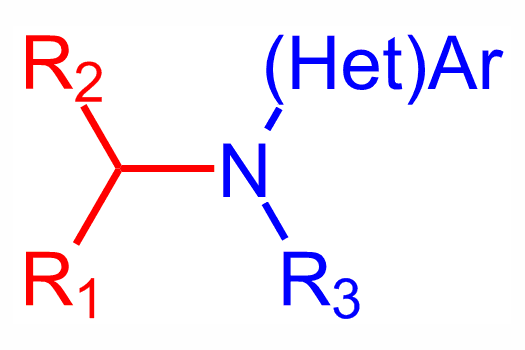Chemoselective Reductive Amination of Carbonyl Compounds for the Synthesis of Tertiary Amines Using SnCl2·2H2O/PMHS/MeOH
A new protocol for a reductive amination of hindered amines.
A new protocol for a reductive amination of hindered amines.
The reductive amination is one of those reactions that you perform A LOT when you are doing medicinal chemistry. But the original protocol by Magid et al. (see 10.1021/op0601013) has limitations. Some protocols have been published, trying to address these problems, usually introducing modifications to the original method (other reducing agents, other Lewis acids…) and sometimes with more radical departures. For example, the work by Beller that we published here recently, using acids and amines with a Platinum catalyst.
This new protocol by Kumar et al. (CSIR-Institute of Himalayan Bioresource Technology, India) belongs to the first type. They have developed a new cocktail of Lewis Acid and reducing agent, aiming specifically for the reaction with alkyl aryl secondary amines. The protocol is easy: to a stirred solution of SnCl2·H2O in MeOH they add the carbonyl compound, the amine and PMHS. This last reagent is polymethylhydrosiloxane, a cheap, friendly and air stable reducing agent that is used in many other protocols (for example, a Rosenmund reduction using Palladium catalysis). Think of it as a polymeric Et3SiH.
The authors include plenty of examples using aldehydes and ketones with alkyl anilines and other primary amines, including some pyridines. Leaving aside some puntual cases, yields are usually excelent.
J. Org. Chem. 2015, 80 (11), pp 5912–5918.
See: 10.1021/acs.joc.5b00156


